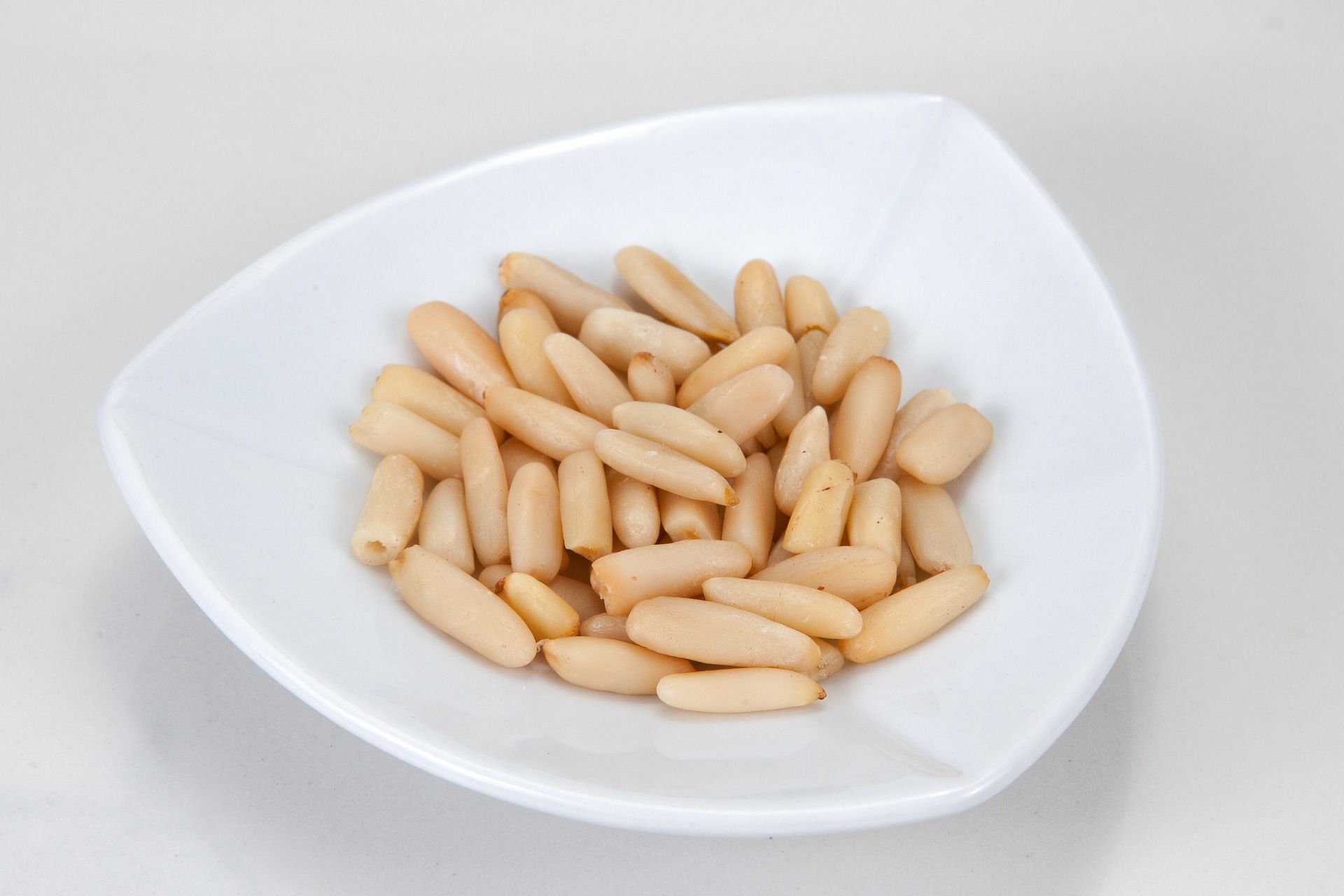Not surprisingly, pine nuts *are* tree nuts, as they come from pine trees. Which are, you know, trees.
But let’s delve further into the difference between tree nuts and pine nuts.
Peanuts, as I’ve mentioned before, are legumes, but we’ll touch upon them here too.
So, tree nuts are any nuts that come from a tree. Namely, the following:
- Almonds
- Beech nuts
- Brazil nuts
- Butternuts
- Cashews
- Chestnuts
- Chinquapins
- Coconuts
- Ginkgo nuts
- Hazelnuts
- Lichee nuts
- Macadamia nuts
- Pecans
- Pine nuts
- Pili nuts
- Pistachios
- Sheanuts
- Walnuts
Pine nuts come from pine cones. There are about 115 types of pine trees, all of which produce nuts, but only about 20 are good enough to be eaten:
- Chilgoza pine
- Chinese white pine
- Colorado pine
- Coulter pine
- Gray pine
- Italian stone pine
- Korean nut pine
- Lacebark pine
- Mexican pine
- Parry pinyon
- Siberian dwarf pine
- Siberian pine
- Single-leaf pinyon
- Sugar pine
- Swiss pine
- Torrey pine
The most common of the above list are Mexican, Colorado, Korean, and Italian pine nuts.
Pine nuts are a common ingredient in pesto sauce, but they can also be added to salads, pasta dishes, and a number of other foods, just like tree nuts. The Food Substitution Bible indicates that almonds, cashews, pecans, pistachios, walnuts, and even peanuts can all be substituted for pine nuts in recipes.
Of course, we can’t examine tree nuts and pine nuts without talking about allergies. Even as I did research for this post, almost all of the information was allergen-related.
I learned a lot about allergies from reading Don’t Kill the Birthday Girl by Sandra Beasley – Beasley grew up with severe food allergies.
It’s a tiny bit off topic, but so interesting I have to mention it: Beasley believes that in today’s world, everyone concentrates on peanut allergies – there are peanut-free baseball parks, peanut-free restaurants, etc.
But in reality, there are eight common food allergies – accounting for more than 90% of allergens in the US – and the other seven don’t get as much attention as peanuts. In addition to peanuts, the most frequently seen food allergies are: milk, eggs, tree nuts, fish, shell fish, soy, and wheat.
As we can see, pine nuts are not on there. But tree nuts and peanuts are.
It’s actually recommended for those allergic to tree nuts to avoid peanuts as well, because of the likelihood of cross-contact during processing.
Also: If you’re allergic to one type of tree nut you’re probably allergic to the others.
To recap: Tree nuts are any nuts that come from a tree; pine nuts come from pine trees. Many people are allergic to tree nuts; a pine nut allergy is fairly uncommon. The two can be swapped out for one another in recipes.

Comments
One response to “Difference between: tree nuts and pine nuts”
Delightful reading your research. Thank you for the information on Pili nuts.